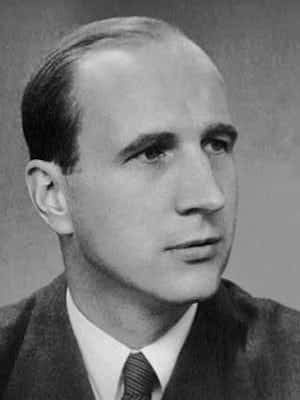Karl-Axel Ekbom
Karl-Axel Ekbom (1907-1977) was a Swedish neurologist.
Famous for his extensive work on pain and paraesthesias. He coined the term ‘restless legs’
Eponymously affiliated with Willis-Ekbom syndrome (restless legs syndrome) and Ekbom syndrome II (delusional parasitosis)
Significant contributions to the characterisation of Melkersson–Rosenthal syndrome, cluster headache and paroxysmal symptoms in multiple sclerosis
Biography
- Born 23 September 1907 Gothenburg, Sweden. Father a GP who specialised in GI disease
- 1931 – Completed his medical degree at Karolinska Institute, Stockholm
- 1934 – Graduated as a medical physician
- 1937-1958 – Spent 20 years working as a neurologist at Serafimer Infirmary Neurology clinic
- 1945 – Published his PhD thesis on restless legs which later won the Swedish Lennmalms Prize, 1949
- 1957 – Appointed Professor of Neurology at the University Hospital of Uppsala
- 1974 – Retired life partaking in his other great interests of philately and literature
- Died 15 March 1977 Uppsala, Sweden
Medical Eponyms
Ekbom Syndrome II (1938)
Ekbom syndrome or delusional parasitosis is characterised by delusions in which an individual falsely believes they are infested by parasites. Symptoms of formication; a sensation of insects crawling under skin. Signs including; matchbox sign – suffers often compulsively gather small particles of skin or fibres that they misinterpret as proof of infestation. Patient’s will store this ‘evidence’ in contains such as matchboxes in order to show to physicians. Self-mutilation – patient will present with self inflicted skin markings such as excoriation of the skin, burn marks and scabs.
Willis-Ekbom syndrome (1944)
Willis-Ekbom disease (WED); Witmaack-Ekbom syndrome or Restless leg syndrome (RLS) is characterised by a ‘compulsive’ restlessness or need to move the legs, often associated with paraesthesiae or dysaesthesiae. Symptoms at rest or disturbing sleep, quickly but temporarily relieved by standing and walking, with nocturnal worsening of symptoms.
75% of patients also experience periodic limb movement disorder characterized by involuntary leg twitching or jerking movements during sleep, which typically occur every 10–60 s throughout the night.
Restless leg syndrome appears to be an enigmatic disorder probably influenced by heterogeneous environmental and genetic factors that may work through a variety of so far ill-defined neurochemical systems. [JMS Pearce 2005]
RLS is associated with iron deficiency, pregnancy, phenothiazines, barbiturate withdrawal, diabetes, uraemia, and respiratory failure. Sudden jerks on falling asleep may be observed also in otherwise normal persons. Probably heterogeneous, Ekbom’s syndrome can occur as a familial condition transmitted as an autosomal dominant trait.
Controversies
Not quite a controversy but interesting none the less Ekbom struggled during WW2 to access any historical literature due to restrictions on international contacts. He used the help of the British Council to access articles from overseas allowing him to complete his first paper in 1944.
His son, Professor Karl Ekbom Jr, inherited his father’s interest in pain and paraesthesias practicing as a Neurologist with a particular interest in cluster headaches.
Major Publications
- Ekbom KA. Praeseniler Dermat-zooenwahn [The Pre-senile Delusion of Infestation]. Der praesenile Dermatozoenwahn. Acta Psychiatrica et Neurologica Scandinavica, 1938; 13, 227–59
- Ekbom KA, Yorston G, Miesch M, Pleasance S, Rubbert S. The pre-senile delusion of infestation. Hist Psychiatry. 2003 Jun;14(54 Pt 2):229-56.
- Ekbom KA. Restless Legs Syndrome: A Clinical Study of a Hitherto Overlooked Disease in the Legs Characterized by Peculiar paresthesia (‘anxietas Tibiarum’), Pain and Weakness and Occurring It Two Main Forms, asthenia Crurum Paraesthetica and asthenia Crurum Dolorosa. 1944.
- Ekbom KA. Asthenia crurum paraesthetica (“irritable legs”): A new syndrome consisting of weakness, sensation of cold and nocturnal paresthesia in legs, responding to certain extent to treatment with priscol and doryl. Note on paresthesis in general. Acta Medica Scandinavica, Stockholm, 1944; 118: 197-209.
- Ekbom KA. Restless legs. Sven Lakartidn. 1951 Apr 13;48(15):862-72
- Ekbom KA. Restless legs syndrome. Neurology. 1960 Sep;10:868-73
- Ekbom K, Ekbom KA. En tidig svensk beskrivning av restless legs (Huss 1849) [An early Swedish description of restless legs (Huss 1849)]. Lakartidningen. 1974 Aug 7;71(32):2905-6
References
Biography
- Ulfberg J. The legacy of Karl-Axel Ekbom. Sleep Med. 2004 May;5(3):223-4.
- Karroum E, Konofal E, Arnulf I. Karl-Axel Ekbom (1907-1977). J Neurol. 2009 Apr;256(4):683-4
- Karl Ekbom Jr. A tribute to Karl-Axel Ekbom. WSD 2010
Eponymous terms
- Wilson JW, Miller HE. Delusion of parasitosis. Archives of Dermatology and Syphilology, 1946; 54: 39-56.
- Coccagna G, Vetrugno R, Lombardi C, Provini F. Restless legs syndrome: an historical note. Sleep Med. 2004 May;5(3):279-83.
- Teive HA, Munhoz RP, Barbosa ER. Professor Karl-Axel Ekbom and restless legs syndrome. Parkinsonism Relat Disord. 2009 May;15(4):254-7.
- Hinkle NC. Ekbom syndrome: a delusional condition of “bugs in the skin”. Curr Psychiatry Rep. 2011 Jun;13(3):178-86
MB BCh BAO Junior Doctor working in Emergency Medicine.

